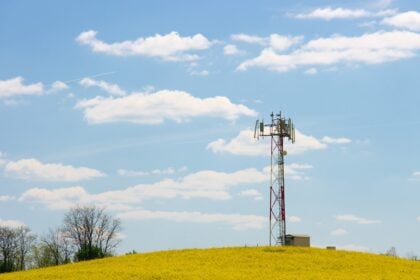Renewable microgrids are here — and they’re changing who controls the switch. Imagine your block running on sunshine and smarts, with batteries that keep the lights steady when the big grid stumbles.
What Exactly Are Renewable Microgrids?
At their simplest, renewable microgrids are small, local power systems that combine solar, storage, and intelligent controls to serve a specific area — a single building, a campus, or a neighborhood. When the larger grid is stable, they can connect and trade power. When it’s not, they can “island,” keeping critical loads on and community life humming.
If you want the cleanest, no-nonsense primer, start with this explainer on what is a microgrid — it nails the fundamentals of islanding, distributed energy resources (DERs), and why local matters.
A TikTok user: “Our block battery kicked in during a storm and nobody noticed the lights blink.”
Why Neighborhoods Are Building Their Own Power
Cost, Control, and Carbon
Microgrids shift communities from passive consumers to co-creators of energy. When your rooftops host PV and your block has a shared battery, you buy less from the utility during expensive peaks. That’s cost control. You also cut local emissions by leaning on clean generation instead of gas peaker plants. As adoption grows, the business case is maturing — see how microgrids are transforming energy today for a current snapshot of economics and deployment momentum.
A Redditor: “We shaved our bills by coordinating solar + storage — feels like a neighborhood superpower.”
From One Street to a Whole District
Today’s conversation isn’t just “my house” vs. “the utility.” It’s blocks linking into clusters, sharing surplus, and coordinating storage dispatch. That’s the promise of networked community microgrids — a flexible mesh of local power that scales resilience from a cul-de-sac to an entire district.
An X user: “Local energy shouldn’t be a luxury; microgrids make resilience feel normal.”
How a Neighborhood Microgrid Works (Without the Jargon)
Solar, Storage, and Smart Controls
Think of the microgrid as a band. Solar panels handle daytime lead vocals, battery storage carries the bridge into the evening, and a controller conducts everything — shifting loads, smoothing spikes, and deciding when to island. Add smart inverters, a protective relay, and a point of common coupling (PCC) and you’re ready for grid-interactive performance.
A typical day looks like this:
- Morning: Solar ramps up; batteries top off.
- Afternoon peak: Smart controls discharge some battery to avoid pricey imports.
- Evening: Stored energy covers the dinner rush; the controller balances against grid conditions.
- Outage: The microgrid isolates in milliseconds, keeps critical circuits live, and rotates non-critical loads to stretch runtime.
Real-World Proof
If you want a case study with receipts, read the Blue Lake Rancheria microgrid story. Built in wildfire country, it kept buildings powered during regional shutoffs — a vivid example of what community-scale resilience looks like when the main grid falters.
Roadblocks (and Practical Ways Around Them)
Upfront Costs and How Communities Beat Them
Sticker shock is real. Panels, batteries, controllers, interconnection work — it adds up. But cost curves are dropping and incentives stack. Start with utility programs, federal tax credits (where applicable), and green bank financing. A numbers-first look at the business case for community microgrids shows how payback accelerates when you monetize peak shaving, demand response, and resilience (e.g., avoiding the cost of downtime for local businesses or refrigerated meds at a community clinic).
Pro tip: Bundle loads. A microgrid that covers a few homes plus a small grocer or café with cold storage creates more predictable value streams than isolated rooftops. More value = better financing terms.
Policy, Permits, and Interconnection
Rules aren’t the enemy — confusion is. You’ll navigate electrical codes, fire codes, zoning, and utility interconnection. The cleanest approach is to appoint a project shepherd: one entity (often an engineering firm or nonprofit partner) that coordinates permits, submits the interconnection package, and chairs weekly check-ins. Keep your scope crisp: critical loads, islanding criteria, and ownership model (co-op, HOA, third-party).
Watch-outs:
- Metering topology: Decide early if you’ll net meter, use virtual net metering, or create a private distribution loop.
- Operations: Who sets the battery’s state-of-charge targets? Who responds to alerts at 2 a.m.? Document it.
Culture Shift: From Consumers to Power Co-Creators
The microgrid isn’t just an engineering diagram; it’s a cultural pivot. Neighbors start talking about load profiles like they used to talk about lawn care. Apartment dwellers ask for battery lockers. Schools and libraries become “cooling hubs.” This is everyday resilience — local, tangible, and kind of addictive.
Microgrids and the Future of “Smart” Neighborhoods
Microgrids plug into bigger tech narratives — sensors, edge AI, and electrified mobility. If you’re tracking where innovation is headed, zoom out to our look at renewable energy tech trends. The same forces accelerating autonomous systems and urban intelligence are supercharging neighborhood power, too.
Bonus Inspiration: Algae-Powered Infrastructure
If you enjoy mind-expanding sustainability ideas, you’ll love our feature on algae-powered data centers — a reminder that local, circular, and green can scale in surprising places. Microgrids are one branch of a larger design movement: generate near the load, reuse waste heat, trim transmission losses, and build with resilience at the edge.
Starter Playbook for Your Block
Ready to move from curiosity to action? Here’s a practical, no-fluff path:
- Map your loads. List critical circuits (fridges, routers, medical devices, lights). Pull a month of interval data if your utility offers it.
- Inventory your roofs and shade. South- and west-facing rooftops are clutch. Check for HOA rules early.
- Pick a footprint. A courtyard of townhomes? A cul-de-sac with a corner store? Keep it compact for easier permitting and wiring.
- Choose a procurement model. Community co-op (member-owned), third-party developer (PPA/lease), or municipal partnership.
- Model the economics. Use realistic solar yields, battery round-trip efficiency, and peak demand scenarios. Test outage runtimes with different state-of-charge reserves.
- Secure incentives. Utility rebates, tax credits, and resilience grants can trim 20–40% of capex depending on your region.
- Design for islanding first. Decide which loads stay up, how long, and at what comfort level. Then optimize for savings in normal mode.
- Plan operations. Who monitors? Who maintains panels? What’s the spare-parts kit? Set alerts and decide escalation paths.
- Run a live drill. Do a scheduled islanding test on a mild day. Measure voltage sag, flicker, and restart times. Gather neighbor feedback and tweak.
- Tell your story. Share performance dashboards at a block meeting. Celebrate the first “storm with no candles.”
Quick Reality Checks
- “Will it cover everything forever?” No — and it shouldn’t. Microgrids excel at keeping life safe and normal-ish: food cold, devices charged, essential lighting on.
- “Is the tech mature?” Yes for solar and lithium-ion; emerging chemistries (sodium-ion, LFP variants, iron-air) are next.
- “Do I need a pro?” For design, permitting, and interconnection, absolutely. DIY spirit is great; certified electricians and experienced developers are non-negotiable.
FAQ: Navigating the Microgrid Movement
Q1: What is the simplest definition of renewable microgrids?
Renewable microgrids are local power systems that use solar, wind, and batteries to supply an area — and can island from the big grid during outages.
Q2: How do renewable microgrids lower costs?
By shaving peak demand, storing cheap solar for evening use, and coordinating loads, renewable microgrids reduce utility purchases when prices spike.
Q3: Are renewable microgrids only for wealthy neighborhoods?
No. Grants, utility programs, and co-op ownership are helping bring renewable microgrids to mixed-income communities, spreading resilience benefits more evenly.
Q4: What happens during an outage on a renewable microgrid?
Controllers island the system, batteries pick up critical loads, and solar extends runtime — the core promise of renewable microgrids.
Q5: How do I get started with renewable microgrids on my block?
Organize neighbors, audit critical loads, talk to a developer with microgrid experience, and pursue incentives to improve the project’s payback.









